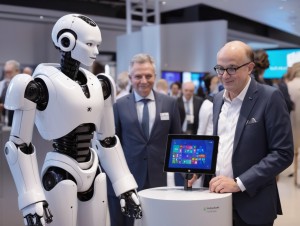Texas airports have embraced biometric facial recognition technology in a swift evolution of travel security, replacing traditional ID checks with a more streamlined and efficient system. The Transportation Security Administration (TSA) has spearheaded this initiative, installing the system in over 200 U.S. airports to enhance identity verification accuracy and expedite security processes. This article delves into the widespread adoption of facial recognition in Texas airports, its implications, and the ongoing debate surrounding privacy concerns.
Facial recognition technology has rapidly increased across Texas airports, with major hubs such as William P. Hobby Airport in Houston, San Antonio International Airport, and Dallas-Fort Worth International Airport embracing this innovative security approach. The TSA’s initial rollout covered 16 airports nationwide, including Dallas, Orlando, and Detroit, with states hosting busy international airports continuing to integrate the technology into their security protocols. The move aims to reduce security line wait times and limit physical contact between passengers and TSA screeners.
Global adoption and technological advancements
The adoption of facial recognition technology extends beyond U.S. borders, with airports worldwide, including Canada, Ireland, Bermuda, the Bahamas, and the United Arab Emirates, incorporating the software into their screening processes. Australia has taken a unique approach, allowing travelers to submit passport information through electronic travel authorization using smartphone technology. The evolution of facial recognition dates back to the 1960s, pioneered by computer scientist Woodrow Wilson Bledsoe. Machine learning has since propelled it, enhancing prediction accuracy through extensive database mining.
Despite the efficiency gains, passenger reactions to facial recognition are mixed. Some appreciate the convenience, as witnessed at Harry Reid International Airport in Las Vegas, while others express concerns about privacy and the potential misuse of facial images. Privacy issues surrounding biometrics, particularly if used for profiling or surveillance without passenger knowledge, have become a focal point of debate. The TSA asserts that passengers can opt out of the system and undergo manual screening; however, critics argue that this could lead to delays, potentially coercing individuals into using the facial recognition system.
Facial recognition success rates and challenges
The TSA reports a 99% success rate with its facial biometrics system, with a 3% or less false negative rate. However, concerns persist about the storage and use of captured images. The TSA claims not to store the images, emphasizing that the technology is not employed for profiling or conducting passenger surveillance. Despite these assurances, reports suggest that some information is retained for up to two years for technology evaluation purposes.
Critics of facial recognition biometrics point to potential racial bias, citing research that indicates higher error rates in identifying Black individuals, particularly women with darker skin. The TSA acknowledges ongoing challenges and plans to test iris scanning as an alternative means of identity verification. As the TSA continues to evaluate and implement facial recognition technology, addressing these concerns will be crucial for widespread acceptance and success.
The integration of biometric facial recognition technology in Texas airports marks a significant shift in travel security protocols. While the TSA emphasizes efficiency and accuracy, passengers’ concerns about privacy, racial bias, and data storage persist. As airports globally adopt similar systems, ongoing debates and technological advancements will shape the future of facial recognition in aviation security. Striking a balance between convenience and safeguarding passenger rights remains paramount for successfully implementing this transformative technology.





